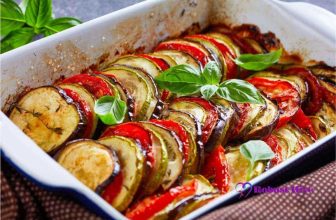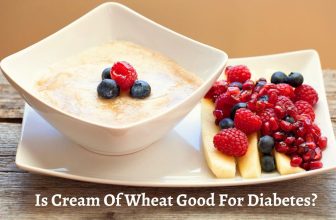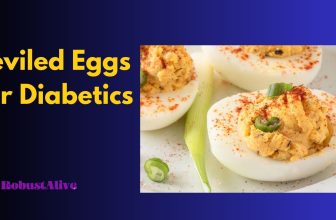Is Plantain Good for Diabetes? Know The Truth
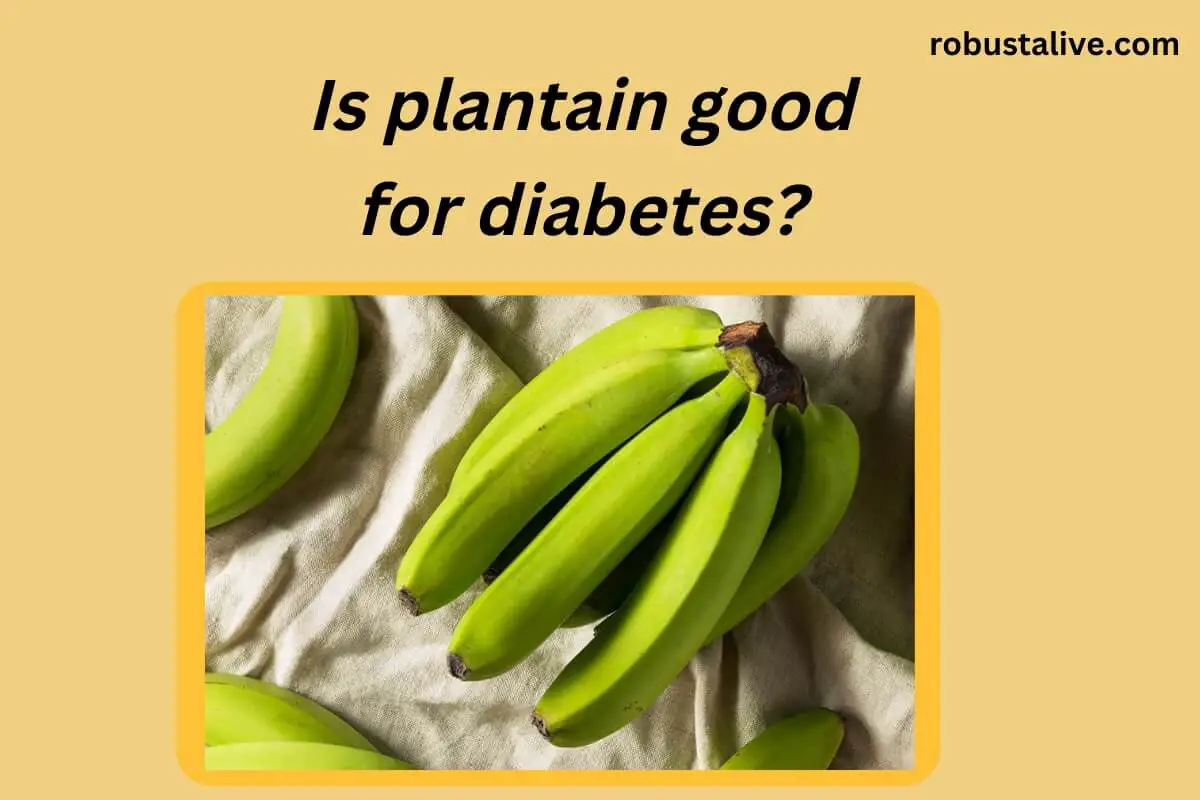
Plantains are a staple in many tropical cultures like Puerto Rico and the Dominican Republic. They are also found in certain African, Asian, and Indian cuisines. Plantains have a similar appearance to bananas but are comparatively longer in size, less sweet, and hard to peel.
In some countries, people use plantain as a natural source for diabetes management. Some studies show that they have a specific hypoglycemic effect controlling blood glucose levels. It’s widespread in unripe plantains. Besides, the fiber presents in the plantains benefits in keeping the blood sugar levels steady for extended periods.
Plantains are rich in nutrients. You can use plantains in both sweet and savory dishes. It is eaten in cooked form as you can’t have them raw. Fully ripened plantains are sweet and starchy like bananas, while green plantains are similar to the taro root and potato.
Because of their convenience, versatility, and low cost, plantains are available in tropical homes. Despite the ripeness stage, they are always in the ready-to-cook form. In addition to these benefits, plantains are rich in carbohydrates, which means diabetic people have to eat them carefully.
The nutritional profile for a plantain serving
A 100-gram plantain serving of about 3.5 ounces has
- 4 grams of fat
- 122 calories
- 32-gram carbohydrates
- 3 grams of protein
- One serving gives 31% of the daily vitamin C and 23% of the vitamin A and antioxidants. They have vitamins K and B, like riboflavin, pyridoxine, and thiamine.
- Plantains have a small amount of iron, 2.3 grams of dietary fiber, and 3% of the daily value.
Health benefits of plantains
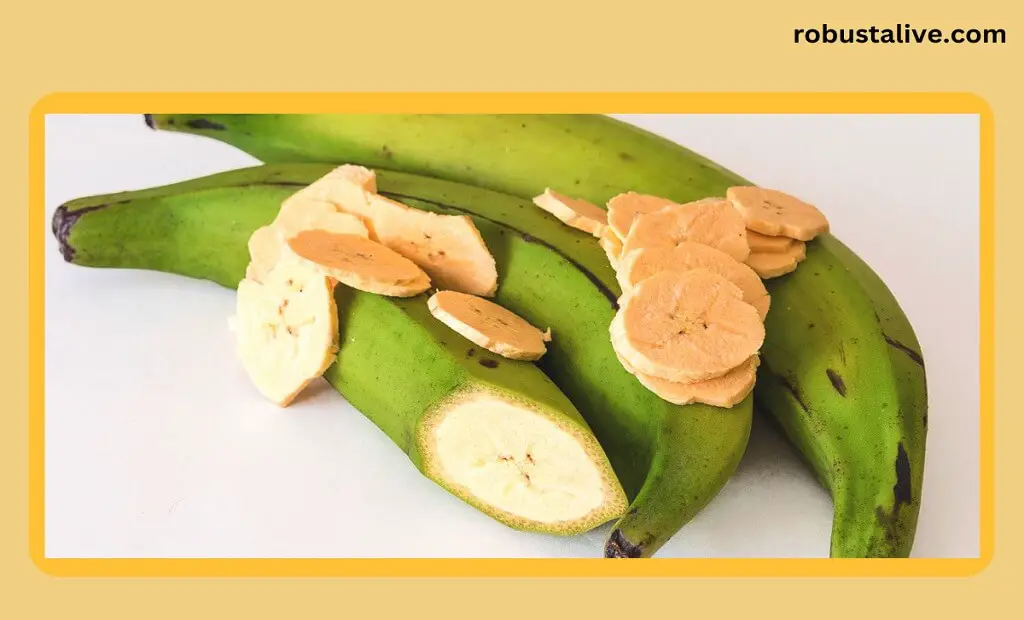
Graphics Credit: Robustalive.com
Green plantains are an excellent source of resistant starch, a dietary fiber that can help you feel full. It doesn’t raise the blood sugar level and keeps your gut healthy by feeding the good bacteria. Yellow plantains are rich in potassium, magnesium, and fiber though they don’t have the resistant starch like green plantains.
-
Diabetes
In many countries like Nigeria, plantains are the natural way to manage diabetes. The studies show they have a special hypoglycemic effect that benefits blood sugar management. Unripe plantains are the most beneficial ones. The fiber present in plantains helps in keeping the steady blood sugar level.
-
Weight control
Plantains are rich in fiber that keeps you full for more extended periods. When you are full for longer periods you will not overeat, leading to weight loss in obese people.
-
High blood pressure
Plantains are rich in potassium. It’s a nutrient that helps with high blood pressure as it works in opposition to the sodium in the diet.
-
Constipation
Fiber-rich plantains benefits in making you regular if you get blocked from time to time.
Do plantains raise your blood sugar?
Is plantain good for diabetes? It’s the most commonly asked question. Continue reading to find out the answer.
Carbohydrate content
Green plantains are the starchy vegetables in the diabetes diet and are comparatively rich in carbohydrates. So, is plantain good for diabetes? Yes, but prepare them without sugar, fat, and salt because, according to the American Diabetes Association, they are the best starchy vegetable option.
A half-cup sliced plantain serving, either raw or cooked, has about 24 grams of carbohydrates. If you select green plantains, a half-cup serving has about 29 grams of carbohydrates and 7 grams of added fat. People with diabetes should usually eat 45 to 75 grams of carbohydrates in one meal.
Glycemic index
The glycemic index benefits in estimating how much a particular food increases the blood sugar level, with the foods scoring less than 55 on the low glycemic index side. Such foods don’t cause a sudden increase in blood glucose levels. Whereas the foods with a score of 75 will cause a sudden spike in the blood glucose level. Green plantains have a glycemic index of 40, which means they will have a low impact on your blood glucose.
Glycemic load
The glycemic load accurately estimates the food’s impact on the body’s glucose level. Because the glycemic load is also considering the portion size of the food and not only the glycemic index.
A 10 or below score is included in the low while equal or above 20 is considered high. Because of the high amounts of carbohydrates the glycemic load is a little higher than average. Its value is 13, which means it will have a moderate impact on blood glucose levels.
Other consideration
Green plantains are a nutrient-rich food that provides essential nutrients like vitamins A, B-6, potassium, copper, and manganese. Instead of avoiding those entirely due to your concerns, pair them with a low glycemic index, fiber-rich food, and other green salads with some other protein-rich foods. Together, these foods will lower tour meals’ glycemic load and limit the increase in blood glucose levels.
How to prepare plantains?
The preparation of plantain has the same importance as the amount of food you eat. You can easily make healthy food waste by adding lots of sugar and fat. When possible, try not to fry your plantains. Though it’s a traditional method, it’s not healthy. You can grill, bake, steam, or boil them.
If you are on a low-sodium diet, you can add more flavors like nutmeg and cinnamon for sweet dishes. For savory dishes, you can also add seasonings like garlic, cumin, oregano, turmeric, and cayenne pepper.
Sugar and carbohydrates
Many of the calories in plantains come from sugar. One sliced plantain cup has 22 grams of sugar, and almost 181 calories of the plantain cup are from carbohydrates. If you are counting your macronutrients to control your blood sugar level, then know that 1 cup of plantain has around 30 grams of carbs. The American Diabetes Association recommends limiting the carb content to 60 grams per meal.
Frying adds fat
When we fry the plantains, there is a sudden spike in the number of calories and these additional calories that we include from the fat. In 1 cup of calories, there are about 14 grams of fat and 365 total calories. When you fry the plantains they lose more than half of their water volume and add a whole lot to the carb count. There are around 58 grams of carbohydrates in the fried plantains.
Plantain chips
Plantains chips are commonly present in grocery stores. When plantain chips are formed, there are around 18 grams of carbs and 8 grams of fat in a typical one-ounce serving. It is also listed on the nutrition label as 28 grams servings. One ounce serving has 151 calories present in it.
The general plantain chip is salted with 1 ounce of the 57 milligrams of sodium. They are generally available in 4 to 12 ounces of bags. Eating a 4-ounce bag means taking in more than 600 calories and 72 grams of carbohydrates, 228 milligrams of sodium, and 32 grams of fats. The American Heart Association recommends limiting the sodium intake to 1500 milligrams.
Conclusion
Food that has carbohydrates like plantains can increase your blood sugar level. The green plantain effect on your blood glucose level also depends on how much you eat in one sitting. Eating green plantain generally increases the blood glucose level but by a moderate amount due to the glycemic load and carbohydrate content. But by following the information mentioned above, you can minimize that increase.
FAQs about Is Plantain Good for Diabetes?
Can a person with diabetes eat plantains?
Green plantains are also counted in the starchy vegetables of a diabetic diet. They are generally high in carbohydrate content. To lower their effect on sugar levels, prepare them without adding salt, fat, or sugar. According to the American Diabetes Association, they can be the top choice of the starchy vegetable option.
Do plantains have a lot of sugar?
Plantains generally have lower sugar and high starch content. At the same time, bananas have lower carbohydrates and high fiber content. Compared to bananas, plantains have a slightly more elevated amount of calories.
Can diabetics have plantain chips?
Plantain is a good source of magnesium and has a high glycemic load and carbohydrate content. That means they can raise blood glucose levels. The plantain chip can significantly impact as it is dried in fats. Therefore it’s recommended that people with diabetes should avoid pairing plantain with other foods that have a low glycemic load and glycemic index.
Is plantain good for diabetes?
You have to monitor the intake of plantain as the high carbs count in it can make a sudden spike in your sugar levels. In simple words, the one plantain cup has a similar amount of carbs as the 2.5 slices of bread.
What happens if I eat plantain daily?
Plantains provide you with the healthy and recommended amount of Vitamin C. It boosts your immunity by acting as an immune system. As an antioxidant, it can also protect your body against the free radical damage related to heart diseases, aging, and other cancers.


